The teddy bears selling for US$1.40 in Shanghai's IKEA store may be just about the cheapest in town, but they're not made in China -- they're stitched and stuffed in Indonesia.
The fluffy brown toys reflect a new challenge for China: Its huge economy, which has long offered some of the world's lowest manufacturing costs, is losing its claim on cheapness as factories get squeezed by rising prices for energy, materials and labor.
Those expenses, plus higher taxes and stricter enforcement of labor and environmental standards, are causing some manufacturers to leave for lower-cost markets such as Vietnam, Indonesia and India.
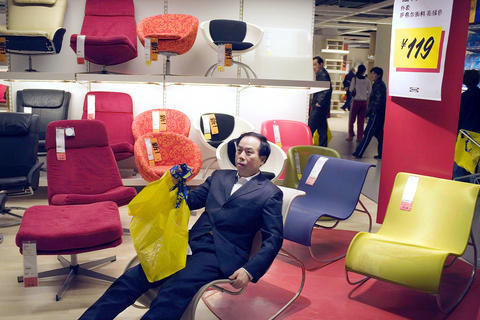
PHOTO: AP
"It's true that we are facing difficulties regarding increased costs in China," said Linda Xu (許麗德), public relations manager in China for Swedish retailer IKEA (宜家中國).
Though the competition for lower prices is not new, "we are constantly having to compete with other countries and suppliers," she said.
While costs in China are rising nationwide, the greatest pain is being felt in the south, where about 14,000 out of the 50,000 to 60,000 Hong Kong-run factories could close in the next few months, said Polly Ko of the Economic and Trade Office in Guangdong, which neighbors Hong Kong.
"Wages are rising, materials cost more. Overall, costs are definitely higher," said Duncan Du, general manager of Shenzhen Oriental e-Tecs Ltd (
To adapt, many multinational manufacturers -- including Intel Corp, Hon Hai Technology Group (
Auto parts makers are decamping for the Middle East and Eastern Europe, textile-makers to Bangladesh and India.
Thousands of smaller Hong Kong, Taiwan or Chinese-run factories in south China's traditional export hub of Guangdong are closing or moving out.
As many as 300 of some 1,000 shoe factories in the Guangdong factory zone of Dongguan have closed down, according to a report by the China Light Industry Council. It said half of the shoe factories set up by Taiwan investors had already shifted production to Vietnam.
Costs have climbed so much that three-quarters of businesses surveyed by the American Chamber of Commerce in Shanghai believe China is losing its competitive edge.
The higher costs mean Western consumers are bound to face steeper prices for iPods, TVs, tank tops and many other imported products made by small Chinese subcontractors.
"Americans continue to want to buy at lower prices," said Kevin Burke, president and CEO of the American Apparel and Footwear Association. "They are used to going to the store during Christmas and getting something cheaper than a year ago."
That's no longer a sure thing.
Chinese inflation, meanwhile, has risen to its highest in more than 11 years, jumping 7.1 percent last month, as snowstorms worsened food shortages. The biggest price hikes have been for food, but longer-term pressures on prices for manufactured goods will persist, analysts say.
"China needs to reprice its exports and that has to be accepted by international buyers," said Andy Xie (謝國忠), an independent economist based in Shanghai.
But raising prices is tough for Chinese manufacturers when the quality of their products is suspect after a slew of scandals over tainted or potentially dangerous products.
At the same time, despite its huge pool of unskilled rural laborers, China's supply of experienced, skilled talent falls far short of demand. The gap has been pushing wages up by 10 percent to 15 percent a year.
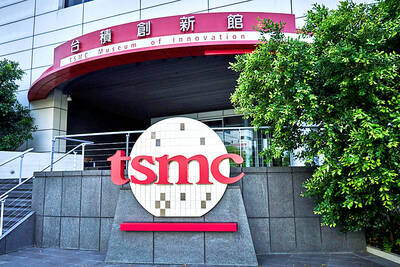
SEEKING CLARITY: Washington should not adopt measures that create uncertainties for ‘existing semiconductor investments,’ TSMC said referring to its US$165 billion in the US Taiwan Semiconductor Manufacturing Co (TSMC, 台積電) told the US that any future tariffs on Taiwanese semiconductors could reduce demand for chips and derail its pledge to increase its investment in Arizona. “New import restrictions could jeopardize current US leadership in the competitive technology industry and create uncertainties for many committed semiconductor capital projects in the US, including TSMC Arizona’s significant investment plan in Phoenix,” the chipmaker wrote in a letter to the US Department of Commerce. TSMC issued the warning in response to a solicitation for comments by the department on a possible tariff on semiconductor imports by US President Donald Trump’s
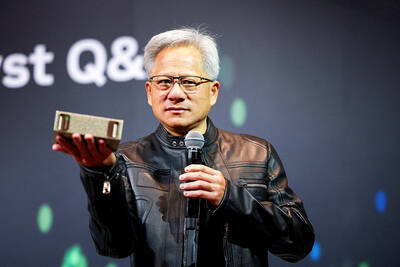
‘FAILED EXPORT CONTROLS’: Jensen Huang said that Washington should maximize the speed of AI diffusion, because not doing so would give competitors an advantage Nvidia Corp cofounder and chief executive officer Jensen Huang (黃仁勳) yesterday criticized the US government’s restrictions on exports of artificial intelligence (AI) chips to China, saying that the policy was a failure and would only spur China to accelerate AI development. The export controls gave China the spirit, motivation and government support to accelerate AI development, Huang told reporters at the Computex trade show in Taipei. The competition in China is already intense, given its strong software capabilities, extensive technology ecosystems and work efficiency, he said. “All in all, the export controls were a failure. The facts would suggest it,” he said. “The US
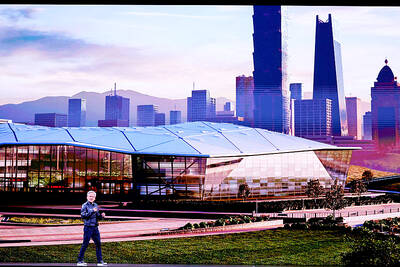
The government has launched a three-pronged strategy to attract local and international talent, aiming to position Taiwan as a new global hub following Nvidia Corp’s announcement that it has chosen Taipei as the site of its Taiwan headquarters. Nvidia cofounder and CEO Jensen Huang (黃仁勳) on Monday last week announced during his keynote speech at the Computex trade show in Taipei that the Nvidia Constellation, the company’s planned Taiwan headquarters, would be located in the Beitou-Shilin Technology Park (北投士林科技園區) in Taipei. Huang’s decision to establish a base in Taiwan is “primarily due to Taiwan’s talent pool and its strength in the semiconductor
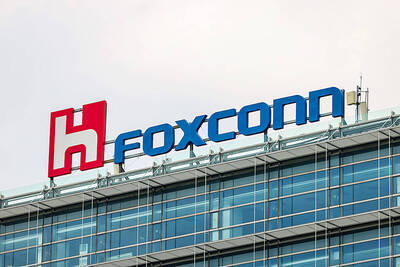
French President Emmanuel Macron has expressed gratitude to Hon Hai Precision Industry Co (鴻海精密) for its plan to invest approximately 250 million euros (US$278 million) in a joint venture in France focused on the semiconductor and space industries. On his official X account on Tuesday, Macron thanked Hon Hai, also known globally as Foxconn Technology Group (富士康科技集團), for its investment projects announced at Choose France, a flagship economic summit held on Monday to attract foreign investment. In the post, Macron included a GIF displaying the national flag of the Republic of China (Taiwan), as he did for other foreign investors, including China-based